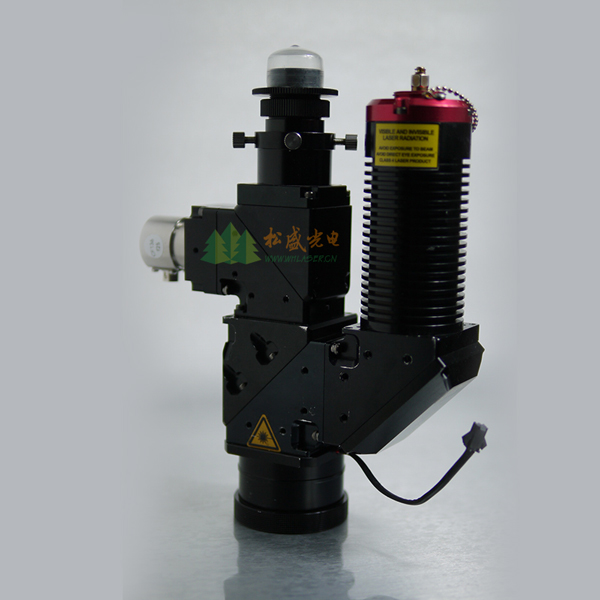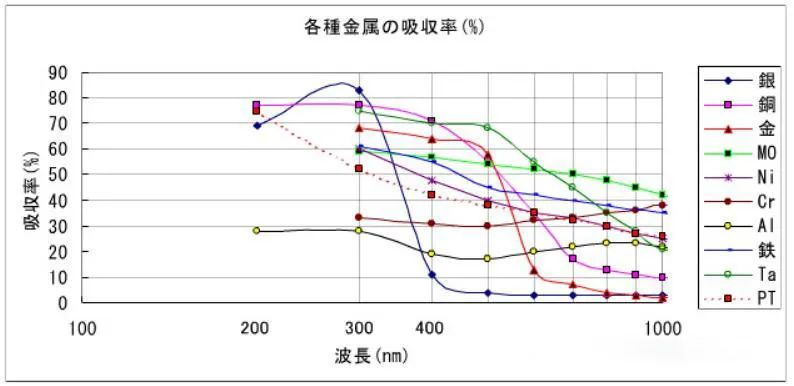Application of Laser Soldering Technology in the Electronics Assembly Industry
Welding technology has always played a vital role in modern industrial production. In recent years, laser soldering—a highly regarded emerging technology—has become a new force in the field of welding. Today, Songsheng Optoelectronics will delve into the process principles, methods, and parameter settings of laser soldering, as well as explore its application scenarios across various industries.
The Process Principle of Laser Soldering

Schematic Diagram of Coaxial Temperature-Measuring Vision Single-Focus Laser Soldering Head
The fundamental principle of laser soldering involves utilizing laser as the heating source. Through the coordination of transmission optical fibers and the laser soldering head, the laser beam is precisely focused on the soldering area. The soldering zone rapidly absorbs laser energy, heating and melting the solder material. Upon cessation of the laser, the soldering area cools and the solder solidifies to form a solder joint.
This process features localized heating, whereby only the specific soldering area is affected while other components of the assembly remain virtually unaffected by thermal influence. The typical laser irradiation duration for soldering is merely several hundred milliseconds. As a non-contact soldering method, it imposes no mechanical stress on solder pads and offers superior space utilization efficiency.
During this process, laser radiation energy is converted into thermal energy, enabling rapid melting of the solder material to complete the welding process.
Laser Soldering Process Methods and Parameter Settings

Illustration of Light Absorption Rates for Various Metals
The process methods and parameter settings of laser soldering are crucial to welding quality. When selecting a laser soldering system, parameters such as laser power, wavelength, focal length, welding speed/duration, and the choice between temperature mode or power mode must be carefully considered and adjusted according to the specific welding materials. In actual welding applications, additional factors including the material's coating, surface condition, thermal conductivity, light transmittance, and absorption rate must also be taken into account to ensure the stability and reliability of solder joint quality.
Laser Power
Fiber lasers possess unique technical characteristics since their inception: optical waveguide transmission enables flexible integration with robotic systems, making them suitable for mass production; with a long service life, semiconductor lasers have undergone 50,000-hour endurance tests, ideal for continuous long-term production; their simple structure facilitates manufacturing, assembly and maintenance - unlike hard-light-path systems requiring specialized precision alignment, fiber laser production demands lower technical requirements for general operators, enabling easier mass production; high photoelectric conversion efficiency, where standard fiber lasers typically achieve 25-30% (over 40% for 976nm pump technology solutions), tripling that of CO₂ lasers, resulting in significantly lower operational costs.
Spot Size
Beam spot size constitutes one of the most critical variables in laser welding as it determines power density. While theoretical diffraction-limited spot size can be calculated based on optical diffraction theory, actual spot dimensions exceed calculated values due to focusing lens aberrations. The simplest measurement method employs isothermal contours - using photosensitive paper burn patterns or polypropylene plate penetration tests to determine focal point and perforation diameters. Practical measurement experience helps operators master the relationship between laser power and beam interaction duration.
Material Absorption Values
A material's laser absorption depends on several key properties: absorptivity, reflectivity, thermal conductivity, melting point and vaporization temperature, with absorptivity being the most critical factor.
Two primary factors influence laser beam absorption: First, the material's resistivity coefficient. Measurements on polished surfaces reveal that absorption rate is proportional to the square root of resistivity, which itself varies with temperature. Second, the material's surface condition (or finish) significantly affects beam absorption rate, producing noticeable impacts on welding results.
Characteristics of Songsheng Optoelectronics Laser Constant Temperature Soldering System
Laser Welding | Soldering Iron Welding | ||
Heating Method | Thermal Energy Conversion | Surface Radiation Heating | Heat Conduction |
Heating Zone | Focused Type | Diffusion Type | |
Heating Duration | Rapid | Slow | |
Application | Temperature Adjustment
| Closed-loop laser energy control with real-time infrared solder joint temperature monitoring | Unable to measure solder pad temperature in real-time - only the soldering iron tip temperature is obtainable. However, due to the contact-based measurement method, the actual pad temperature cannot be accurately acquired. |
Advantage | Capable of soldering heat-sensitive or crack-prone components | Suitable for high thermal-capacity pads | |
Additional Costs | Maintenance | Minimal | Frequent |
Consumable Parts | Negligible | Soldering Iron Tip | |
Comparison Diagram of Laser Soldering vs. Iron Soldering
High Processing Precision: Laser spot diameter as small as 0.1mm enables soldering of micro-pitch mounted components and chip parts.
Localized Short-Duration Heating: Minimal thermal impact on the substrate and surrounding components. Different heating profiles can be applied based on component lead types to achieve consistent soldering quality.
No Soldering Iron Tip Consumption: Eliminates the need for heater replacement, enabling high-efficiency continuous operation.
Superior Processing Accuracy: Laser spot size can reach micron-level precision. Processing time and power are program-controlled, far exceeding the accuracy of traditional soldering irons. Capable of soldering in spaces under 1mm.
Multi-Optical Path Coaxial System: CCD positioning ensures "what you see is what you get," eliminating the need for repeated visual alignment corrections.
Non-Contact Processing: No stress induced by contact soldering and no static electricity generation.
Eco-Friendly Energy Source: Laser represents the cleanest processing method with no consumables, simple maintenance, and user-friendly operation.
Crack-Free Lead-Free Soldering: Ensures flawless solder joints without cracks during lead-free soldering processes.
Case Studies of Laser Soldering Applications
Application in Automotive Electronics
In the automotive electronics sector, laser soldering is widely used for welding components such as wiring harnesses, sensors, and control modules. This technology enables high-precision soldering, significantly enhancing the reliability and durability of automotive electronic products.
Application in Current Sensors
For current sensors, laser soldering is employed to create solder joints between sensor electrodes and circuit boards. This method not only improves joint reliability and precision but also minimizes thermal impact on sensitive sensor components, thereby boosting sensor performance and stability.
Application in Photovoltaic New Energy
Within the photovoltaic industry, laser soldering plays a critical role in manufacturing solar sensors and inverter energy storage boards. It enhances welding conversion efficiency and power tube stability in inverters, reduces material waste and energy consumption, optimizes inverter dimensions, and improves both production efficiency and economic benefits.
Conclusion
As an innovative welding technology, laser soldering offers exceptional efficiency, accuracy, and non-destructive advantages, making it indispensable across multiple industries. Looking ahead, with continuous advancements in laser technology, we anticipate its expanded adoption in broader applications – delivering more precise, energy-efficient, and high-performance welding solutions to industrial manufacturing while creating greater operational conveniences and technological contributions.
Contact: Mr.Xiao
Phone: +86-13385280662
E-mail: market001@whlaser.cn
Add: Room 02, Floor 5, Building 9, Gezhouba Sun City, No. 40, Gaoxin 4th Road, Donghu New Technology Development Zone, Wuhan